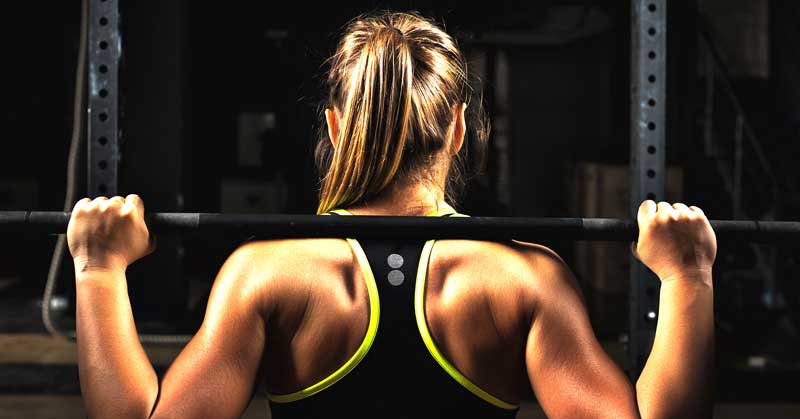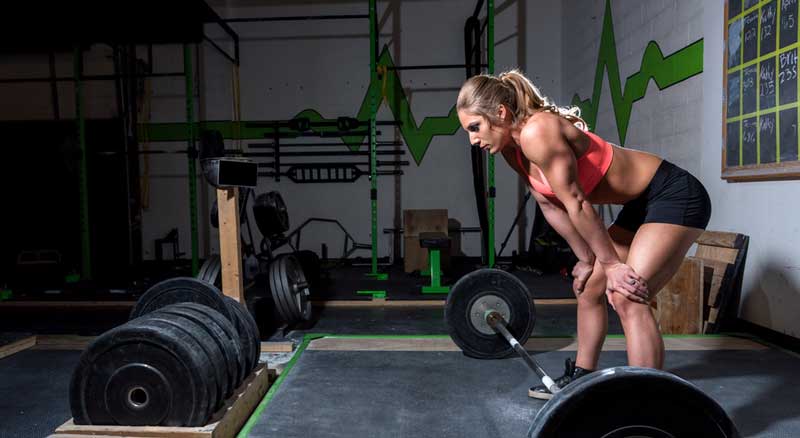[mashshare]


I am one of the (increasing) many who say that “The Basics” must be in place first in order to optimize any training program. They work, they’ve always worked, and they will continue to work forever! I also know what I think are the basics—the fundamentals, the groundwork for future work, the basis from which all else grows.
However, even though I have lightly defined the term, someone could still say that I haven’t told you what exactly “the basics” means, and they would be 100% correct. While lots of folks mention that we should get back to the basics, it begs another question: If everyone says it’s time to get back to the basics—implying that many coaches are not using the basics—then why are we not getting back to the basics?
Perhaps because there is no general, agreed-on consensus as to what the basics are. It could very well mean that the basics have several definitions and that all those definitions are correct. Maybe. So why not use Merriam-Webster to get the true definition of “the basics”?
Definition of basic:
- a: of, relating to, or forming the base or essence: fundamental. basic truths
b: concerned with fundamental scientific principles: not applied. basic research - a: constituting or serving as the basis or starting point. a basic set of tools
There is no question that we all understand the meaning of “basic.” The question is whether we understand the meaning as it relates to training and building performance models based on a yearly plan of periodization. Here’s my perspective of what this means in my philosophy; perhaps it will ring true to some of you reading this.
The Reason I Say, ‘Get Back to the Basics’
Generally, I say this because I watch coaches hasten the training process—too much, too soon; too complex, too soon; skipping steps towards the best performances. A few examples are younger, less-experienced athletes performing complex lifts, lift variations, or multi-response single leg plyometrics and skilled athletes of any age performing advanced training based on their sport skill level.
It’s not exclusive to training, either. The use of athlete tracking systems when other aspects of the program are weak or absent (sports nutrition, training compliance, sport coach strength and conditioning buy-in) ignores the fundamentals of development. I know of one organization willing to fund an annual six-figure commitment to the purchase of tracking equipment before committing to a full-time sport nutritionist. To me, that’s skipping necessary steps and improperly forming the basis for the best possible future results.
I think this quote I picked up years ago sums it up nicely:
“We need to realize that building a system to reduce risk needs to start with the basics and build vertically step by step, instead of taking the express elevator to the top and finding the foundation crumbling beneath us!”–Carl Valle, Boston Sports Medicine and Performance Group, LLC Blog, 1/8/14
The gist of this is easy to understand. Sure, beginning with the basics ensures risk reduction when it comes to injury, but it also ensures physical performance improvement. The crumbling foundation could mean injury but also less-than-best performances camouflaged as “good” performances.
Starting with the basics ensures injury risk reduction as well as physical performance improvement, says @Coach_Alejo. Share on XFrom my vantage point, identifying a lack of the basics is mainly part physiology and part common sense. When Kyle Kennedy of Razor’s Edge Performance in Canada tweeted, “I’m not against “mastering the basics”, but there’s no consensus on what that means,” my first reaction was that of course everyone knows what the basics are. Only when I started writing about it did I see he was right. I couldn’t put the damn thing in a finite box; ergo, no consensus. Although science, and what it looks and smells like, helps identify the basics, there are a bunch of layers to this. My only weapon against this is to start the dialogue with my examples and the rest is up to, as they say in the South, y’all!

Real-World Examples: Skipping the Basics
The following are three real examples that I see where coaches skip the basics and ignore science. I point out what they’re doing wrong, and why.

Get back to the basics! – Young or physically underdeveloped baseball athletes swinging a bat connected to resistance cables, with full or partial swings.
Here’s why – First of all, this type of “sports-specific” training has never proved helpful. If I’m wrong, please contact me and persuade me with the volumes of anecdotal or scientific information; a topic for another day. I’d say the more important questions is: Does the player have a good swing to begin with? My initial thought isn’t a strength and conditioning question or even science-related. So, even if this drill strengthens the movement—and it doesn’t—it won’t matter anyway if the player doesn’t have good swing mechanics.
The basics of strengthening a good swing would be to have a good swing! Second, the operative words are that the athlete is “young or physically underdeveloped.” There has been some research by David Szymanski suggesting that total body strengthening is just as good as “baseball-specific” training (additional forearm exercises) for high school baseball players for creating bat head velocity.1,2,3
Three 12-week studies from three different states and three different years indicated that full body exercises were just as good as total body exercises with supplemental forearm training. And, by the way, the groups that did no forearm training still increased grip strength, showing that gripping barbells and dumbbells while training is beneficial in young athletes. There’s nothing shocking here, as any sport biomechanist would tell you that the entire body swings the bat and throws the ball—it is a chain of events.
All this means that the basics for strengthening a swing are to perform a total body strengthening program, and improve and acquire a good swing through batting practice while the weight training program contributes strength to the swing over time. After acquiring a standardized level of strength AND swing mechanics in the trained population, the athlete might begin to use heavier or lighter bats that are weighted enough that the swing is not altered. Research has suggested a weight only a few ounces more or less than the game bat. Additionally, total body power exercises can begin at this time: squat jumps, high pulls, and single response-body weight plyometrics.

Get back to the basics! – Sloppily pulled or pushed weighted sleds.
Here’s why – No coach wants to practice poor technique, so why have sloppy anything? That’s basics, isn’t it? Poor technique leads only to one question: Are you coaching what you are seeing?
If the technique you are looking at is not what you want, a) Don’t post it as a video, and b) Make sure the athlete can perform the exercise correctly. In this case, can the athlete push/pull an unweighted sled? I know it sounds silly, but it’s common sense. If the athlete can perform a push/pull without weight then weight is the problem.
I do the same with weighted lifting exercises. Sometimes the weight (light or heavy) dictates the technique even during technical acquisition. Pulls from the ground are the perfect example. Occasionally, during the beginning stages, coaches might add a little more weight than the athlete can handle; their legs straighten at the moment of separation, they don’t pull the bar high enough during the second pull. That’s the time when you go back to the bar and check whether they can perform the movement unloaded. If they can, the weight is the problem and the correct loads are somewhere between the bar and the bad-technique weight. If they can’t, start at the beginning.
If the athlete is not that much better at sled-only load, then there are plenty of places to look: lower body strength; core strength; functional movement screen assessments; overall running technique (in particular, starting technique); and 10m runs. Sled push/pulls have been shown to improve starting and running speed. However, performing them incorrectly allows for little or no benefit and it could result in an acute or chronic injury. Master the basics before getting to the sled—get strong and acquire good running technique. After that, begin with a sled load that allows for the strength to come through in the form of good “drive angles,” and a solid torso to deliver force from the legs to the ground to the sled for locomotion.


Get back to the basics! – Young or physically underdeveloped athletes bench pressing or squatting with bands or chains.
Here’s why – Basic exercise science! I’m sure we can all agree that young and underdeveloped athletes make the fastest gains in the shortest amount of time. In fact, they probably make the most gains percentage-wise than in their entire life. We also know that overload and progression is a critical part of strength-gain, given the right pace and timing. If the speed of overload and progression is too quick for athletes who are not strong, the result is injury or, at the very least, a more rapid decline than normal in strength gains over time—neuromuscular overload is my theory.
Basic science tells you that with this type of athlete, the nervous system is the first adaptive mechanism, not muscle. Just learning the lift will increase strength, so it’s a cheap and easy way to gain strength. As the literature confirms, early strength gains with novice lifters are neural in nature, as demonstrated by little, if any, hypertrophy accompanying the increases in strength. Therefore, take your time.
I consider bands and chains as advanced techniques. If we are writing programs based on physical status and needs, advanced technique for beginners is an oxymoronical philosophy: It makes no sense. I’m not saying that inexperienced athletes won’t gain strength with bands and chains—they work and there’s research to back that up. What I’m saying (and so does the science) is that when you start too early with the complex stuff, the benefit is not as great. We want the most gains, right? Using the basics in this case means teaching the lift to proficiency, training for a length of time to gain a standardized strength level, and then assessing if a more complex level of training is needed to maintain the normal progress of strength gains in the program.
Common ‘Basics’ Tenets
Without beating around the bush, the following is a list of what we know to be true:
- Strength is the building block for power.
- Strength is the building block for speed.
- Strength is the building block for speed endurance.
- Strength is the building block for reducing the risk, severity, and incidence of injury.
(See a theme here?) - Two- or one-legged squat technique and strength are the basis for optimizing squat jumps, multi-response plyometrics, banded or chain squatting, and heavy partial movements.
- Bench press, squat, and deadlifting (powerlifting or Olympic) technique and strength are the basis for optimizing banded or chain squatting, and heavy partial movements.
- Coordination is the basis for agility.
I’m sure this list is not comprehensive, as I was not intent on making this article the definitive masterpiece but rather a start for thoughts going forward. Additionally, when we talk about strength over a spectrum of qualities of varying energy sources, the absolute measures are very different. No one would argue that the strength necessary for sprinting 100 meters is the same as for running a 10K.
However, there is a relative strength—individual as it may be—optimizing performance in a 10K. Even now we see that vertical jump height, usually used as a marker or assessment for power, is associated with faster times in distance events. This leads to a theory that if strength is part of the power equation, then it has value when looking at jumping performance.
The Basics Are the Basis
Definitively, “The Basics” serve as a starting point, forming the basis of training regardless of the athlete’s chronological or training age. I agree with what I hear and read from some of my colleagues: Not following the basics means skipping steps in what is a multi-level training, teaching, or philosophical method intended to achieve the best results, often involving younger or physically underdeveloped athletes.
A too-much, too-soon approach with results that might appear favorable is misleading in terms of what could have been possible. Essentially, “taking the express elevator to the top” goes against science and, in some instances, best practice. Understanding basic scientific principles (neural adaptation, physiology, kinesiology) and following common sense helps to recognize and order the steps necessary to create the best path to the best outcome.
I have been there and I understand having to do the elementary stuff while yearning for the glitz and energy of the more fun and complex exercises. In the end, what keeps me on the steady course are the huge physical dividends that the athlete is going to experience down the road because I chose to teach their body the proper progression to its highest level.
Since you’re here…
…we have a small favor to ask. More people are reading SimpliFaster than ever, and each week we bring you compelling content from coaches, sport scientists, and physiotherapists who are devoted to building better athletes. Please take a moment to share the articles on social media, engage the authors with questions and comments below, and link to articles when appropriate if you have a blog or participate on forums of related topics. — SF
[mashshare]
References
- Szymanski, DJ, Albert, JM, Reed, JG, Hemperley, DL, Moore, RM, and Walker, JP. Effect of overweighted forearm training on bat swing and batted-ball velocities of high school baseball players. The Journal of Strength and Conditioning Research. 22(6): 109-110. 2008.
- Szymanski, DJ, McIntyre, JS, Szymanski, JM, Molloy, JM, Madsen, NH, and Pascoe, DD. Effect of wrist and forearm training on linear bat-end, center of percussion, and hand velocities, and on time to ball contact of high school baseball players. Journal of Strength and Conditioning Research. 20(1): 231-240. 2006.
- Szymanski, DJ, McIntyre, JS, Szymanski, JM, Bradford, TJ, Schade, RL, Madsen, NH, and Pascoe, DD. Effect of torso rotational strength on angular hip, angular shoulder, and linear bat velocities of high school baseball players. Journal of Strength and Conditioning Research. 21(4): 1117-1125. 2007.




